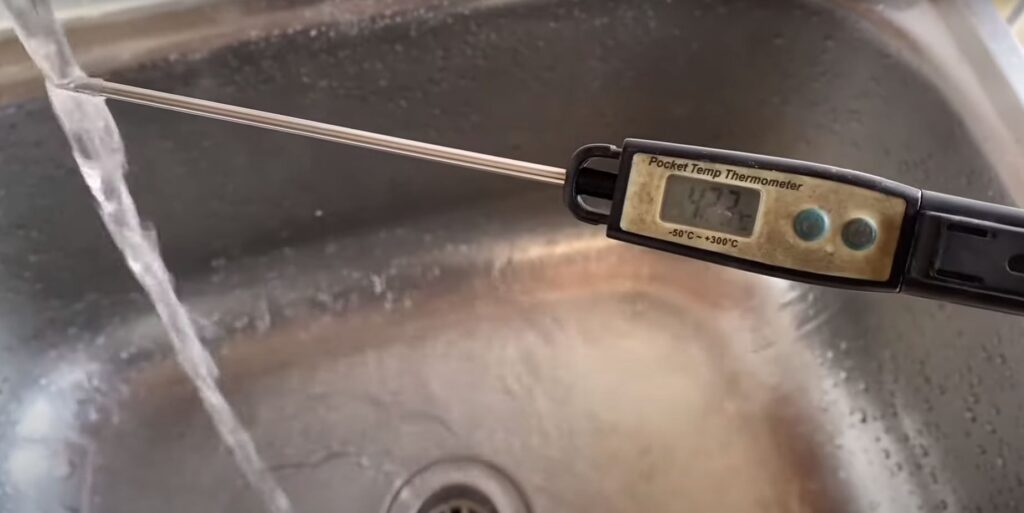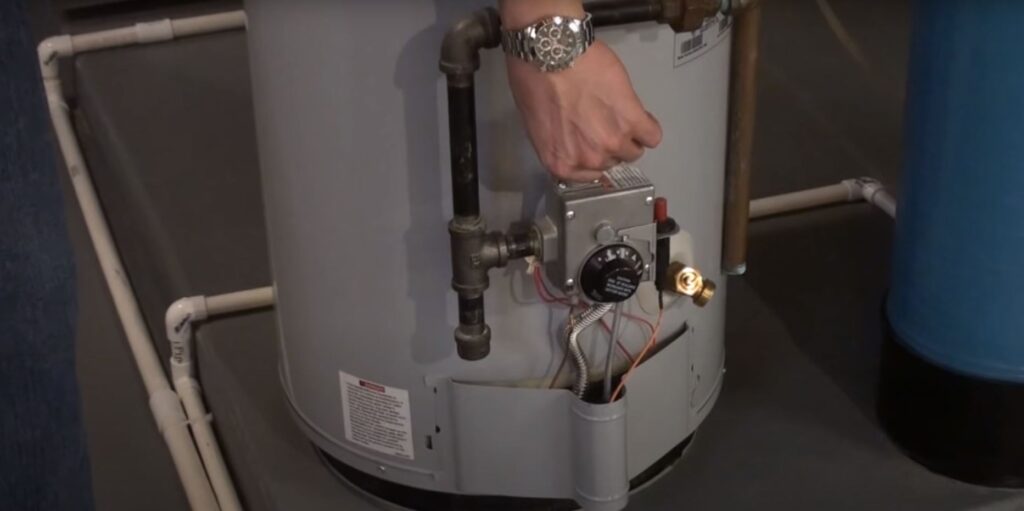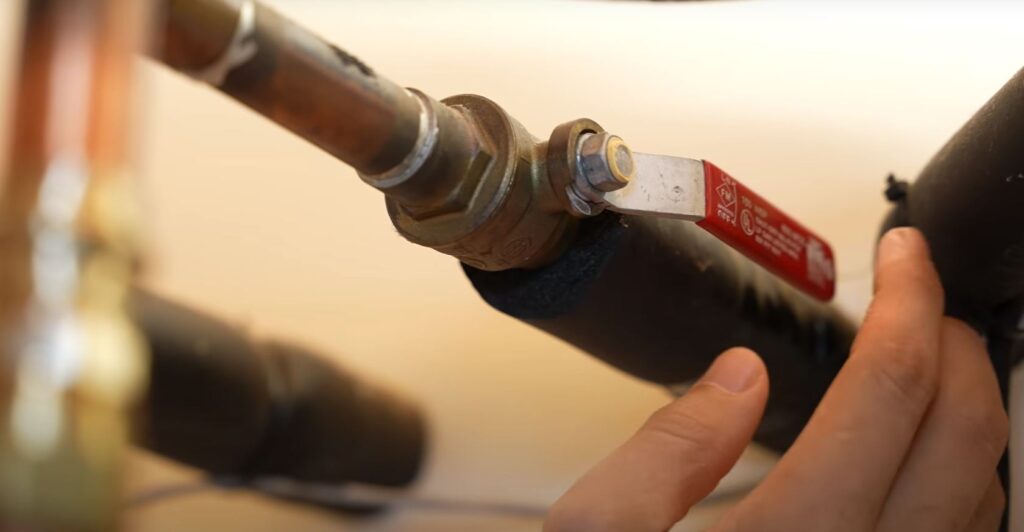Optimal Temperature Settings for Water Heaters in Melbourne
Melbourne’s unique climate and varied housing, from modern apartments to classic homes in Hawthorn, necessitate a thoughtful approach to water heater temperature settings. It’s important to strike a balance between energy efficiency, safety, and health concerns.
Balancing Safety and Efficiency
The recommended temperature range for water heaters is between 49°C and 60°C. This range is crucial for multiple reasons:
- Bacterial Control: Temperatures below 49°C risk bacterial contamination, including the growth of legionella bacteria, which can cause Legionnaires’ disease. Maintaining a minimum temperature is essential to prevent such health hazards.
- Scalding Prevention: Setting the temperature above 60°C increases the risk of scalding, especially in households with children or elderly individuals.
Customizing Water Heater Temperatures for Diverse Melbourne Homes
In Melbourne, where the architecture ranges from the contemporary designs in the city to the heritage homes of Hawthorn, tailoring your water heater settings to meet specific household needs is crucial. Here’s a closer look at how different scenarios might influence the ideal temperature setting:
- Homes with Dishwashers Without Preheating: For efficient cleaning and sanitization, it’s recommended to set the water heater close to 60°C. This ensures the water is hot enough to effectively remove grease and kill germs on dishes.
- Households with Vulnerable Residents: In homes with elderly individuals, young children, or those with certain medical conditions, keeping the water temperature around 49°C is advised. This reduces the risk of accidental scalding, which these groups are more susceptible to.
- Energy-Saving Considerations: For those keen on reducing their energy bills, a slightly lower setting, while still above 49°C, can be effective. This balance can reduce energy consumption while still protecting against bacterial growth.
- Larger Families or High Usage Demands: In homes with higher hot water usage, such as large families, it might be practical to keep the temperature towards the higher end of the recommended range. This ensures that there is enough hot water to meet the demand, especially during peak times.
- Properties with Multiple Bathrooms or Extended Plumbing Systems: In larger properties or homes with complex plumbing systems, setting the heater at a higher temperature can compensate for heat loss as water travels through the pipes.
- Areas with Hard Water: For areas with hard water, like certain parts of Melbourne, a slightly higher temperature setting can help reduce mineral build-up in the water heater. However, this should be balanced with the increased risk of scalding and higher energy usage.
Each of these scenarios requires a unique approach to setting the water heater temperature, considering both the comfort and safety of the residents, as well as the efficiency of the system. It’s important to assess your household’s specific needs and habits to determine the most suitable temperature setting for your water heater.
Optimal Water Heater Temperature Settings for Various Melbourne Household Scenarios
| Household Scenario | Recommended Temperature Setting | Reasons/Considerations |
| Homes with Non-Preheating Dishwashers | Close to 60°C | Ensures effective cleaning and sanitization of dishes |
| Households with Vulnerable Residents | Around 49°C | Minimizes scalding risk for children, elderly, or medically fragile |
| Energy-Saving Focus | Slightly lower than 60°C, above 49°C | Balances energy efficiency with bacterial safety |
| Larger Families or High Hot Water Usage | Towards higher end of 49°C to 60°C | Meets increased hot water demand, especially during peak times |
| Properties with Multiple Bathrooms/Extended Plumbing Systems | Higher within 49°C to 60°C range | Compensates for heat loss in longer pipe runs |
| Areas with Hard Water | Slightly higher, balancing risks | Reduces mineral build-up in the water heater, considers scald risk |
Health and Safety Considerations
The health and safety implications of water heater temperature are significant:
- Consumer Safety Recommendations: Some safety organizations recommend a maximum temperature of 49°C to prevent burn injuries.
- Microbial Concerns: Setting the water heater below 49°C can facilitate the growth of harmful bacteria, such as Legionella, which is associated with serious respiratory illnesses.
- Scalding Risks at Higher Temperatures: At temperatures above 49°C, additional safety measures, like thermostatic mixing valves, are recommended to reduce the risk of scalding.
Professional Consultation for Optimal Settings
For Melbourne residents, consulting with professional hot water system services is advisable to determine the optimal setting for their specific water heater and household needs. Professional advice is particularly beneficial in ensuring that the water heating system operates efficiently and safely, tailored to the unique requirements of Melbourne’s diverse housing. Engaging experts such as the team at Hot Water Repairs Melbourne in hot water system repair and maintenance can provide personalized guidance, ensuring the right balance between safety, efficiency, and health considerations.
Frequently Asked Questions About Water Heater Temperature Settings
What is the recommended temperature range for water heaters?
The ideal temperature for most water heaters is between 49°C and 60°C, balancing safety, efficiency, and bacterial control.
Why should the water heater temperature not be set below 49°C?
Setting the temperature below 49°C increases the risk of bacterial growth, including legionella bacteria, which can lead to health issues like Legionnaires’ disease.
Is it safe to have the water heater temperature above 60°C?
No, setting the temperature above 60°C can increase the risk of scalding, especially in homes with children or elderly individuals.
How does water heater temperature affect energy consumption?
Lowering the water heater temperature slightly, while staying above 49°C, can reduce energy consumption without compromising safety and efficiency.
Should homes with dishwashers without preheating set a higher water heater temperature?
Yes, homes with dishwashers that don’t preheat water may need to set their water heater closer to 60°C for effective dish sanitization.
What temperature should be used in homes with elderly or young children?
For homes with vulnerable individuals like the elderly or young children, it’s advisable to keep the water heater temperature around 49°C to prevent scalding.
Can water heater settings be adjusted for large families or high usage?
Yes, for households with high hot water demand, setting the temperature towards the higher end of the recommended range can ensure sufficient hot water availability.
Are there specific considerations for water heaters in areas with hard water?
In areas with hard water, a slightly higher water heater temperature can help minimize mineral build-up, but it should be balanced with scalding risks and energy usage.
Key Takeaways on Water Heater Temperature Management
Optimal water heater temperature is crucial for safety and efficiency.
Setting the water heater between 49°C and 60°C ensures a balance between preventing bacterial growth and reducing the risk of scalding.
Temperature settings should be tailored to household needs.
Consideration of specific household factors like the presence of vulnerable individuals, dishwasher type, and overall hot water usage is vital in determining the ideal water heater temperature.
Lower temperatures can help with energy conservation.
Slightly reducing the water heater temperature, while maintaining it above 49°C, can lead to energy savings without compromising safety or efficiency.
Adjustments may be necessary for homes with high usage.
In households with large families or extensive hot water needs, setting the temperature towards the higher end of the recommended range can ensure adequate hot water supply.
Hard water areas might require higher temperature settings.
In regions with hard water, a slightly higher temperature setting can help reduce mineral build-up in the water heater, though it’s important to balance this with the risk of scalding and increased energy usage.




